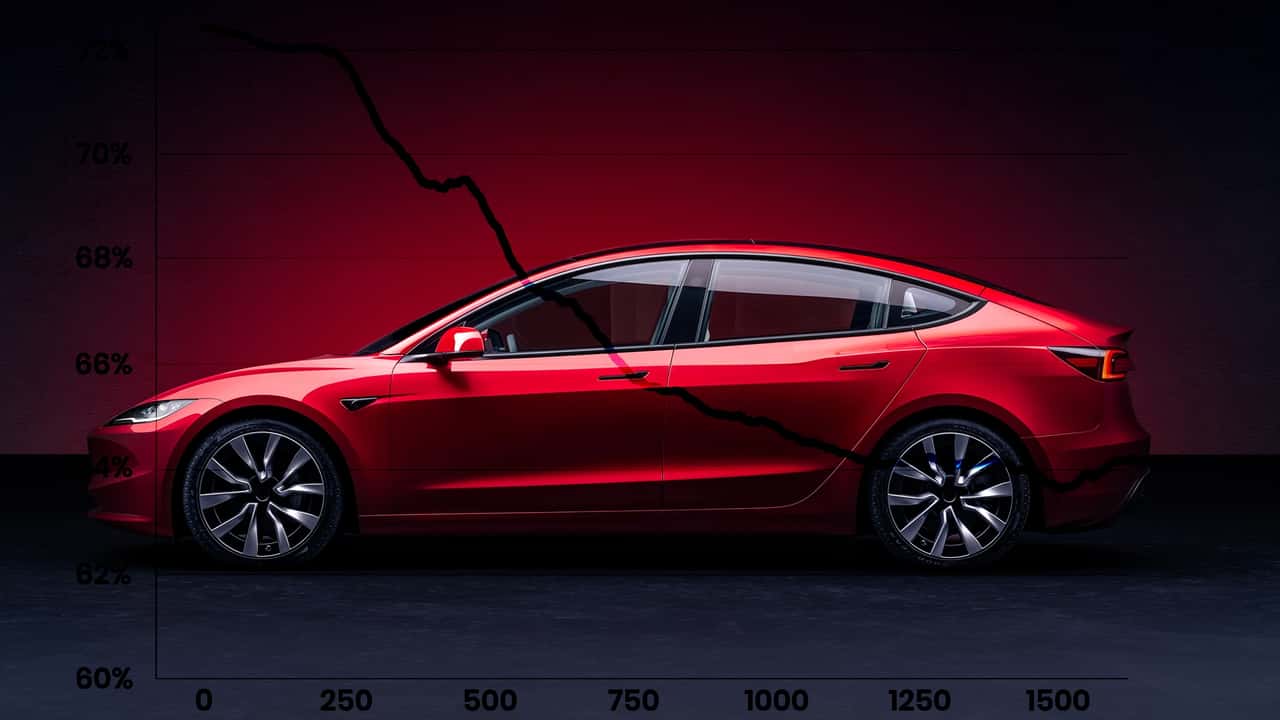One of the first questions I get asked about my Tesla is, “What happens when you need to replace the battery?” It’s easy to brush off because there are plenty of facts regarding failure statistics, warranty, and even the cost should it happen. What people don’t typically ask about is battery degradation.
It’s a real thing with EVs, just like that iPhone you’re reading this article on. As batteries age and go through charging cycles, they lose capacity. A new study by Recurrent digs into that data by studying 12,198 Teslas, and the report shows the cars are only achieving a fraction of their advertised EPA range well before most people pay off their loans.
Get Fully Charged
EV Battery Degradation
Battery degradation is a fact of life. However, some battery chemistries—like lithium iron phosphate (LFP) packs found in some Tesla models—are more susceptible to calendar aging than others. Either way, if you own an EV, don’t expect perfect range forever.
The data from Recurrent shows that after approximately three years (right around the 1,100-day mark), the average Tesla Model 3 and Model Y are achieving just 64% of their original EPA-rated range.
Recurrent can pinpoint battery life using the data it collects from 7,078 Model 3s and 5,120 Model Ys. It used nearly 1.6 million observations (around 130 observations per vehicle) to determine average fleet-wide battery degradation statistics used in its report.

It’s important to point out that the Teslas observed in Recurrent’s study never actually appear to hit the advertised EPA range. Even at 0 miles, the cars only achieve between 70% and 72.5% of their advertised EPA range. That means a 2023 Tesla Model 3 Performance, rated by the EPA as having 315 miles of range, may be observed hitting around 230 miles on a single charge out of the box.
This isn’t a problem unique to Tesla. As Recurrent says, “The basic EPA testing protocol gets it wrong for all EVs.” It doesn’t factor in temperature changes or driving above 60 miles per hour, plus it allows for manufacturer adjustments.
The relevant factor to consider here is the delta between a fresh car and how much range it still has after three years. This appears to be between 6% and 8.5% before leveling off at the three-year mark—not too shabby.
Recurrent’s data also shows that Teslas don’t appear to be as affected by DC fast charging as some other brands, which is a plus for people who like to take long road trips or don’t have access to Level 1 or Level 2 charging at home.
A recent study has revealed that Tesla owners are experiencing a significant decrease in their vehicle’s range after just three years of ownership. The study, conducted by a team of researchers from the Massachusetts Institute of Technology (MIT), found that Tesla vehicles are only able to achieve 64% of their Environmental Protection Agency (EPA) estimated range after three years on the road.
The findings of this study come as a surprise to many Tesla owners who have come to rely on their vehicles for their long-range capabilities. The EPA estimates the range of electric vehicles based on standard driving conditions, but real-world factors such as weather, driving habits, and the age of the battery can all contribute to a decrease in range over time.
According to the study, the degradation in range is particularly pronounced in colder climates, where extreme temperatures can have a negative impact on the performance of the battery. The researchers also found that Tesla vehicles with higher mileage tend to experience a greater decrease in range compared to newer vehicles.
The implications of this study are concerning for Tesla owners who have invested in the brand’s reputation for long-range electric vehicles. While Tesla has made significant advancements in battery technology in recent years, the study highlights the importance of regular maintenance and proper care of the vehicle to ensure optimal performance.
Tesla has yet to comment on the findings of the study, but the company is known for its dedication to innovation and improvement. It is likely that Tesla will continue to work towards improving the range and performance of its vehicles in the future.
In conclusion, the study conducted by MIT researchers sheds light on the challenges faced by Tesla owners in maintaining the range of their vehicles over time. As electric vehicles become increasingly popular, it is important for both manufacturers and consumers to be aware of the factors that can affect the performance of electric vehicles and take steps to mitigate any potential decrease in range.

